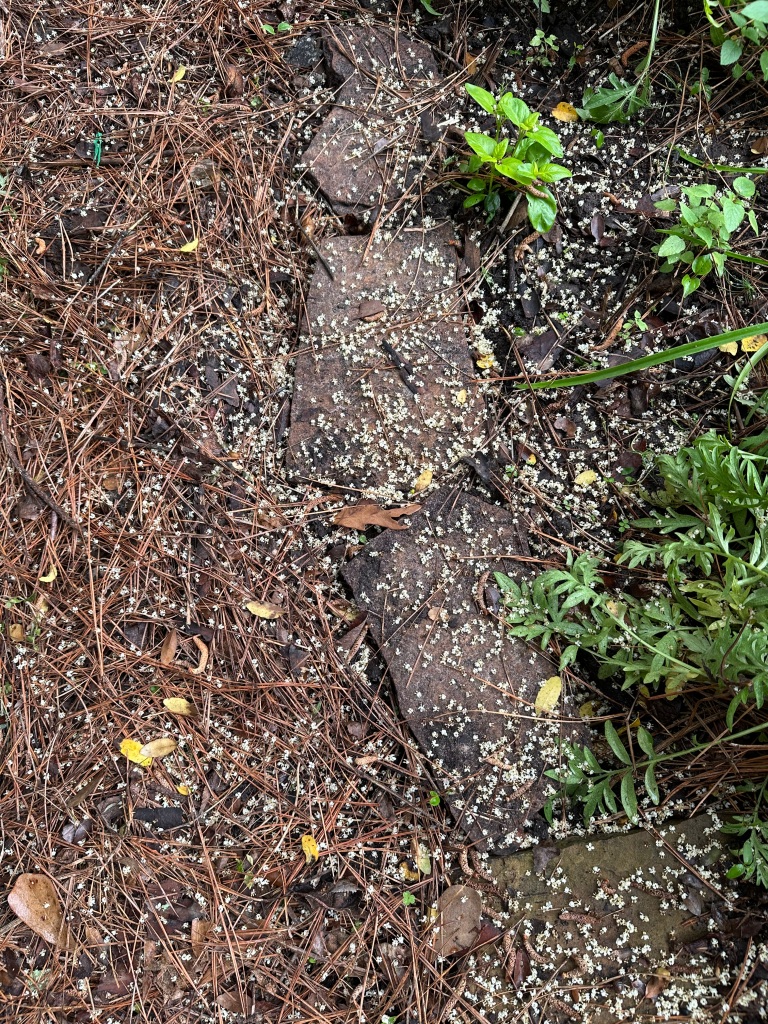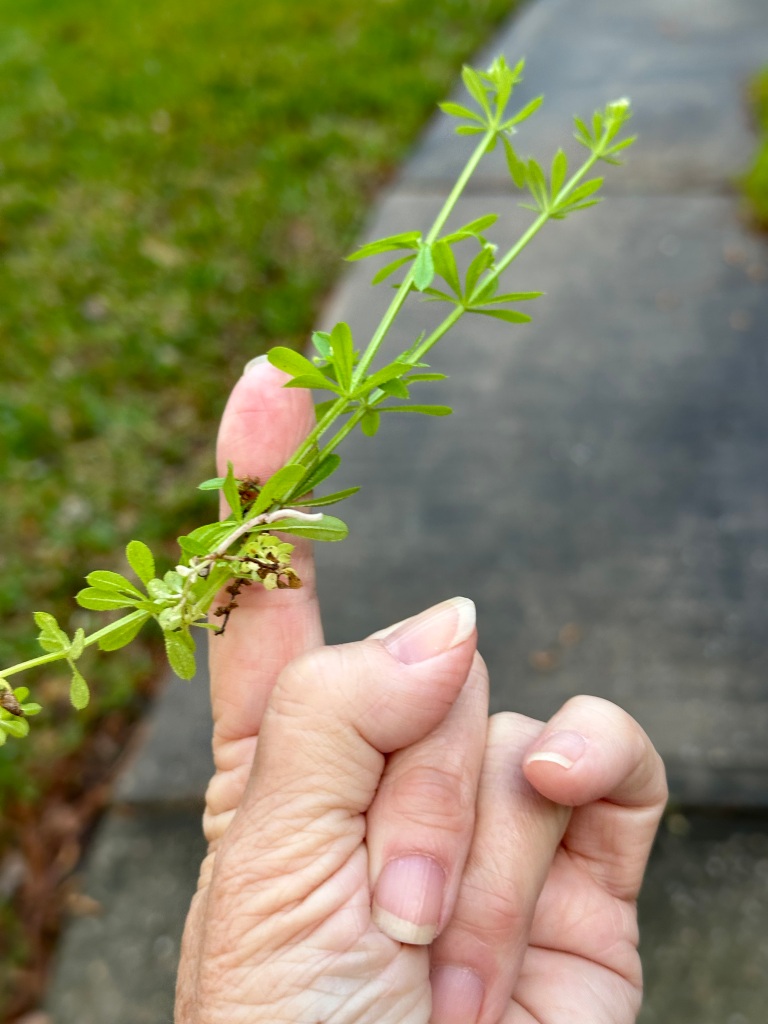Texas Spring
Posted: March 25, 2024 Filed under: Gardening | Tags: Blue Bonnets, Gulf Coast gardening, hardy, Ilex vomitoria, Southern Gardening, Yaupon Holly, Year-round gardening 25 Comments
In Texas, the first sign of spring is the annual blooming of Blue Bonnets. I try to have a few in the garden every year.

The native Yaupon Holly trees’ tiny flowers have opened with a scent that fills the air. Their botanical name Ilex vomitoria comes with a warning.

The diminutive flowers cover the ground like snow.

And with spring comes weeds. This is a sticky weed. As I have mentioned before, I don’t take up brain space learning weeds’ proper names. I wish I had counted the bushels of weeds I pulled this spring.
Ilex vomitoria
Posted: January 17, 2017 Filed under: Gardening | Tags: Automatic Gardening, Backyard Critters, Cardinals, Cedar Waxwings, Gardening, Gulf Coast gardening, Ilex vomitoria, Piney Forest, Yaupon Holly, Year-round gardening 15 CommentsNotice the second part of this tree’s botanical name. What does that word bring to mind? Yes, the name comes with a big warning. If you eat the berries, the result is not pretty.
We know this tree as Yaupon Holly and is another native of the Piney Forest. Yaupons usually have skinny trunks and grow just about anywhere, as between these two pines. Like the American Tree Holly in the previous post, it makes tiny flowers in the spring with the berries forming quickly. It is a small tree and will spread by root. Most consider it a weed tree.
But it has many hidden secrets, besides what happens when humans eat the berries. Its flowers are a food source for bees. Cardinals dine on the berries and flocks of Cedar Waxwings devour them. Now for humans, we can make tea from the leaves which contain caffeine and antioxidants (make sure you do research before eating it). With a name like vomitoria, I think I will skip the tea!


